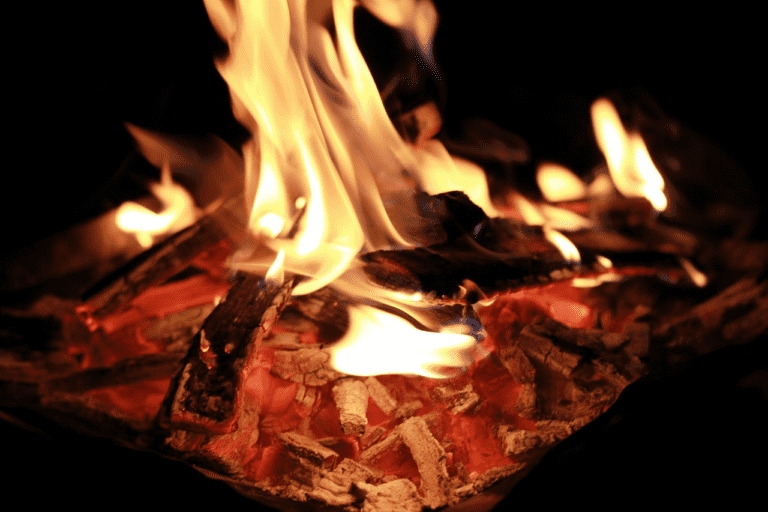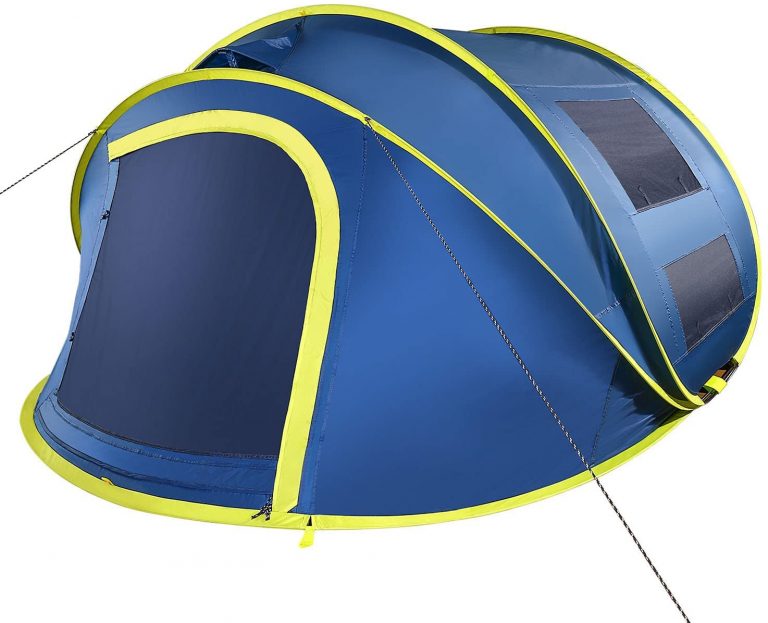Imagine waking up in your tent on a cool morning, ready to breathe in the fresh air only to discover that everything inside is damp from condensation. It's a common issue for campers, but it doesn't have to be your experience.
Whether you're an avid backpacker or prefer leisurely car camping trips, understanding how to prevent tent condensation can make all the difference between a soggy start and a serene sunrise.
Choosing the right tent, placing it strategically, using moisture absorbers and ensuring proper ventilation are key factors in keeping things dry. Tools like footprints or groundsheets can also be helpful.
This guide will equip you with practical tips rooted in camping know-how, so you can enjoy your freedom under the stars without any damp distractions. Let's dive into how you can stop tent condensation and keep your camping gear dry even when nature has other plans.
Key Takeaways
- Choose the right tent material and consider seasonal factors
- Properly place the tent on flat, dry, and sheltered ground
- Ensure proper ventilation and airflow through the use of mesh windows and positioning the tent to face prevailing winds
- Use moisture management techniques such as keeping wet items outside the tent and using waterproof containers
Understand the Causes of Condensation
You've got to know, understanding what causes that pesky condensation in your tent can make all the difference between a damp, uncomfortable night and a cozy, dry camping experience.
The key culprits are dew point basics and humidity impact. Let's dig deeper into these.
Dew point is the temperature at which air becomes saturated with water vapor, causing it to condense into droplets – you'll notice this as dew on your tent walls. When you're in your snug sleeping bag breathing out warm air, creating heat inside an enclosed space like a tent, the contrast of temperatures may cause condensation when this warm air meets the cooler surface of your tent.
Humidity plays its part too. Moisture-laden air from outside or even from your own breath can contribute significantly to condensation levels in the tent; especially if ventilation is poor.
Now, don't be disheartened! You can combat these issues effectively by incorporating smart camping practices such as proper site selection and adequate ventilation management. Remember: knowledge is power! So now that you understand why condensation occurs in tents, you're well-prepared for tackling it head-on during your free-spirited adventures outdoors!
Choose the Right Tent
Selecting an appropriate shelter can make a significant difference in handling moisture buildup during your camping adventures. Pay careful attention to the tent materials and seasonal considerations when selecting your outdoor home.
Tent materials play a crucial role in condensation management. Look for those with built-in ventilation systems such as mesh panels, vents, or flaps that promote air circulation. A double-wall tent provides excellent insulation, reducing the chances of condensation as it creates a barrier between the inner warm air and outer cold air. Also, consider tents made from breathable fabrics like cotton or polycotton which allow moisture to escape.
Seasonal considerations are equally important. In colder seasons, go for four-season tents built to withstand harsh weather conditions while keeping condensation at bay. During warmer months, opt for three-season tents designed with more mesh for optimum airflow.
Remember this: not all tents are created equal when it comes to preventing condensation. It's about finding that perfect balance between comfort and functionality without compromising your freedom under the stars. So, before you set off on your next adventure, choose a tent wisely – one that suits both your needs and nature's whimsies.
Proper Tent Placement
Finding the ideal spot to pitch your camping haven can be a game-changer, melting away anxieties about unwelcome moisture build-up. Your tent's orientation and site selection are key factors in reducing condensation. Aim for the driest ground possible, avoiding depressions where water may pool. Also, consider wind direction; setting up with the breeze can ventilate your tent and lessen dampness.
Here's a quick guide on choosing your campsite:
| Good Site Selection | Poor Site Selection | |
|---|---|---|
| 1 | Flat terrain | Sloped ground |
| 2 | Dry ground | Damp or marshy areas |
| 3 | Sheltered from wind | Exposed areas |
| 4 | Away from water bodies | Near lakes or rivers |
| 5 | Open air | Under dense trees |
The right placement can significantly cut down on condensation issues. Orienting your tent with consideration for sun exposure is also wise; morning sun dries out any overnight condensation.
Remember not to seal your tent completely as it traps moist air inside leading to condensation. Instead, exploit the built-in ventilation features of your gear; open those vents and let that fresh air circulate! By giving careful thought to these factors when pitching your tent, you'll create a more comfortable and dryer camping experience.
Use of Moisture Absorbers
Drawing on the ancient wisdom of sailors' use of silica gel to keep their sea charts dry, it's worth noting that these handy little packets can be your secret weapon in waging war against unwanted dampness in your camping haven.
Silica gel is a powerful desiccant widely used as a moisture absorber due to its high absorption efficiency. It pulls water vapor from the air, trapping it within its grains and subsequently reducing condensation.
Diversifying your absorber types can also help combat tent condensation. Some alternatives include calcium chloride crystals or charcoal briquettes, both known for their impressive moisture-wicking properties. Calcium chloride works by absorbing humidity and converting it into brine which can then be disposed of safely. Charcoal briquettes, on the other hand, have porous surfaces that absorb excess moisture effectively.
Remember though, while all these options are great additions to your camping gear, absorber efficiency depends largely on proper placement and regular change-outs. For optimal results, place them strategically around your tent and replace or recharge them as needed.
Avoiding condensation doesn't mean sacrificing your love for wilderness exploration; it simply means being well-prepared with the right tools at hand – embracing freedom without compromising comfort during those memorable nights under the stars.
Proper Ventilation Techniques
You'll be amazed at how effective proper ventilation can be in keeping your camping abode fresh and dry. Proper tent ventilation techniques not only prevent condensation, but also create a healthier sleeping environment by reducing humidity levels inside the tent.
Here are some strategies to consider for better airflow:
- Ensure that your tent has mesh windows or vents that can be opened or closed depending on the climate.
- Consider investing in a tent with breathable fabrics that allow moisture to escape while keeping rain out.
- Position your tent strategically, with openings facing prevailing winds to promote cross-ventilation.
- Avoid closing off all of your ventilation points, even during colder nights.
- Invest in a camping fan if you're not getting enough natural wind flow.
These methods work wonders when it comes to controlling excess moisture within your tent. It's interesting how something as simple as adjusting the way you set up camp can have such an impact on comfort and dampness levels. Remember, nature isn't against you; sometimes, you just need to know how best to work with it.
So next time you pack for an adventure, keep these tips in mind to ensure your freedom from dampness and discomfort under canvas.
Keep Wet Items Outside the Tent
While mastering ventilation techniques is a key strategy in your battle against tent condensation, there's more you can do to keep moisture at bay. Let's turn our focus now to the simple yet effective tactic of keeping wet items outside your tent.
It's easy to overlook how soaked gear can contribute to the humidity inside your shelter. Wet clothes, boots, or cooking utensils can all add unnecessary moisture. To combat this, make use of efficient drying techniques such as hanging items on a line outside or using quick-dry fabrics when possible.
For items that aren't easily dried, consider bringing waterproof containers where they can be safely stored without adding dampness into your tent interior.
Remember that it's not just about removing these items from your space; it's also about managing them properly once they're out there. Opt for high-quality camping equipment that will fare well in outdoor conditions and retain its functionality even when exposed to elements like rain or morning dew.
There's no need for you to compromise your comfort for the sake of adventure – with careful planning and strategic practices like these, you'll find yourself enjoying nature's freedom without having to deal with unwanted condensation buildup in your tent.
Use of a Tent Footprint or Groundsheet
Don't underestimate the power of a good footprint or groundsheet for your camping setup; it's an absolute game-changer when it comes to managing moisture levels. These under-tent barriers not only protect your tent from sharp objects, but they also prevent condensation by creating a barrier between the cold ground and your tent floor.
When selecting a footprint material, consider durability and waterproof qualities. Here's a quick rundown:
| Material | Durability | Waterproof Qualities |
|---|---|---|
| Polyester | High | Moderate |
| Tyvek | Medium | High |
| Polycro | Low | Very High |
Groundsheet maintenance tips are equally important. Always ensure that your groundsheet is clean and dry before packing it away to avoid mildew formation.
Remember, freedom in camping isn't just about the open road and starry skies; it's also about being free from annoyances like tent condensation. So, invest in a high-quality footprint or groundsheet, choose the right material based on your needs, maintain them well, and enjoy that liberating feeling of waking up dry in your tent morning after morning. You certainly won't regret this decision!
Frequently Asked Questions
What materials are best for preventing condensation in a tent?
Condensation Resistant Fabrics are key. Choose breathable materials like Gore-Tex or polyester. Don't overlook Ventilation Importance though: proper airflow fights dampness effectively. From experience, balancing these elements ensures your tent's freedom from condensation.
How does the number of tent occupants affect condensation?
More occupants mean more breathing patterns in your tent, increasing moisture and condensation. Your sleeping arrangements matter too: space out well to allow air circulation. It's a delicate balance of personal comfort and practicality.
Are there any recommended tent designs that can help reduce condensation?
Like a breath of fresh air, tent design is key to combating moisture. Emphasizing ventilation importance, tents with multiple mesh panels or vents are your condensation solution. These designs allow free airflow reducing dampness effectively.
Can certain weather conditions increase the likelihood of condensation in a tent?
Absolutely, weather conditions can greatly impact condensation. Humidity's influence is significant; higher humidity means more moisture in the air. Dew point effects also play a role as cooler temperatures can cause moisture to condense.
Are there any specific tent brands that are known for better preventing condensation?
Ironically, no magic tent brand eliminates condensation completely. It's more about ventilation importance and individual condensation solutions. Higher-end brands like Hilleberg or MSR stress on proper venting for breathability, which helps in condensation reduction.
Conclusion
In a nutshell, don't let condensation rain on your camping parade. Pick the right tent, place it wisely, and bring along moisture absorbers. Ventilate well and keep wet items outside. A footprint or groundsheet can be your best friend in keeping dry. With these tips up your sleeve, you'll weather any camping storm with ease. Remember, knowledge is power – even when you're out communing with Mother Nature!







